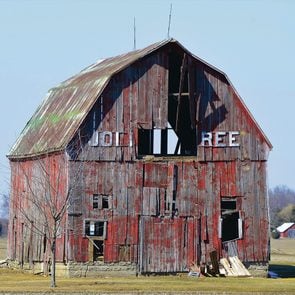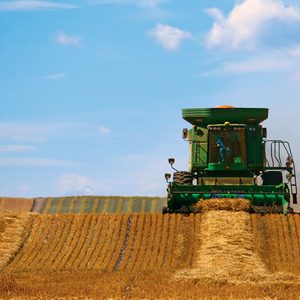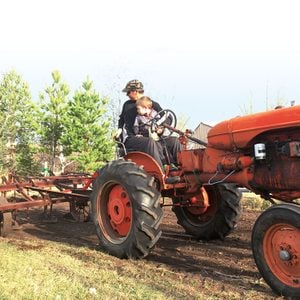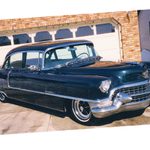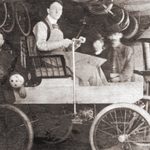Check Out This Alberta Farmer’s Collection of Classic Tractors
Dating back 75 years, these vintage workhorses just keep chugging along.
Collecting Old John Deere Tractors
My first total tear-down was the 1947 John Deere D. It came from a college friend’s farm, about 400 miles away, and had been used on their farm forever!
Back then, it had a hay sweep on the front for stacking loose hay. No GPS or power steering in those days; it was slow and awkward but hard-working and reliable. In later years, it pulled a manure spreader, and then sat idle in a shed for many years.
A veteran John Deere mechanic had it started within an hour, after removing a big pailful of seeds, pine cones and other tidbits from the radiator and other nooks and crannies that had been stashed away over the years by rodents.
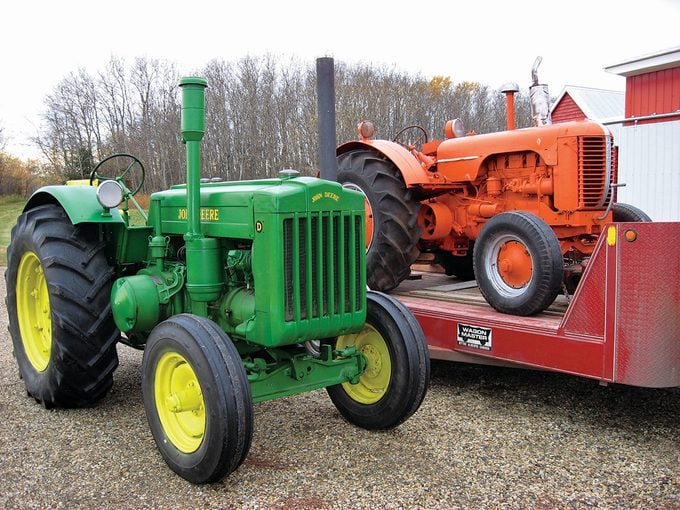
The Rebirth of JD D
Although the engine of this old John Deere tractor turned over with minimal effort, the JD D was in need of a complete overhaul to make it fully functional. So, the whole machine was torn down—engine, transmission, body and everything in between. The parts were refurbished or re-built where necessary, and it was reassembled. I kept the original old tires on it, in keeping with the overall feel of a hard-working farm tractor.
It puts out 45 horsepower through its two horizontal pistons; it has a right-side hand clutch and a huge old flywheel, which together give it the ability to pull down to low rpms yet keep lugging a load. “Our Johnny Popper,” as I like to call it, is still my favourite toy to bring to “show and go” events. It’s even pulled a three-bottom plow at our local Tractor Club Plow Days.
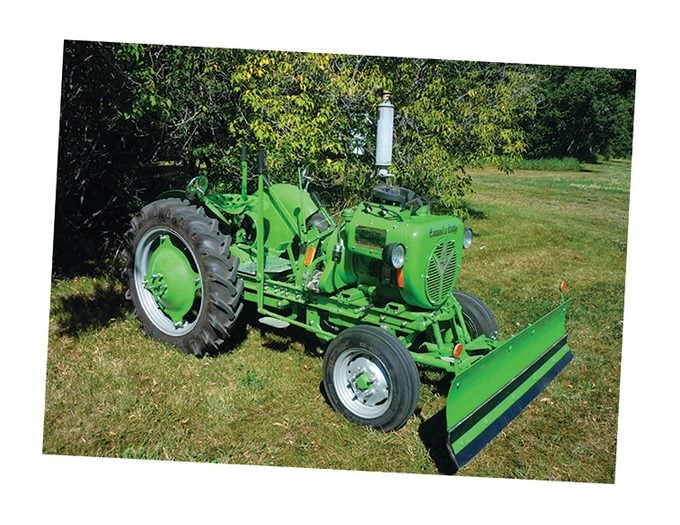
A Unique Gibson
My wife’s 1947 “custom-built” Gibson was made by a neighbour who lived in the village nearby. He was a mastermind at rebuilding rare machinery—anything with a motor—from scratch. This creation started out from the basic scraps of an original Gibson, but the motor is from a swather, the gearbox from a big loader and other missing parts were found, made or adapted as his ingenuity dictated.
This model of Gibson tractor came from the factory with tiller steering (no wheel) and a three-point hitch lever. It would’ve been used in an orchard or for garden work. The blade on my wife’s custom Gibson is from a modern garden tractor, added mainly as a conversation piece, although it works and can serve its intended purpose. The green paint job is not factory original because the man who built it chose to paint each of his creations a different colour.
I bought it for my wife’s 65th birthday, as the builder was downsizing at that time. I am glad that he had an opportunity to see the unmistakable joy on her face while she was driving it in town parades and at events at the nearby museum.
An original Gibson tractor, of which there were three models, would’ve sold for between $760 and $845. It was produced by Western American Industries in Longmont, Colorado. The advertising slogan was “Big tractor performance on small farms.”
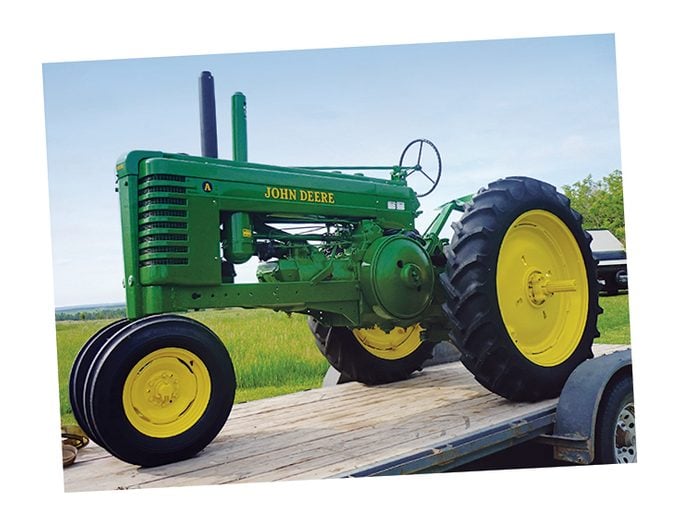
A “Win-Win” Trade
The 1947 John Deere A, 35 HP, came to me in a horse trade, which involved a couple of old JD carcasses I had in my possession that a local master rebuilder wanted. The JD A was an extra for him, so it was a win-win trade. I remember our neighbours by our old farm had this model while I was growing up, and we would use it for haying. What a thrill for a kid to drive! Sitting up high, I felt like the king of the road. With its tricycle wheels, it turned very short, which could prove to be very dangerous if one hit the wheel brake on one side only!
Tiny & Tough Case D
The orange 1952 Case D, 35 HP, was tucked away in a farm shed about 300 miles away, intact and complete. It was trailered home and an old farm friend adept with Case machines quickly had it running. The body repair and painting followed. The J.I. Case Company was named after its founder, Jerome Increase Case—oddly enough, his actual name.
On our old farm, this model was our only tractor for years. I remember plowing, harrowing and baling with it. It wasn’t easy to work with, especially in tandem with an Allis-Chalmers Roto-Baler. Because it didn’t have live PTO (a two-stage clutch), for every bale you had to stop the tractor, take it out of gear, roll the bale through to the kick-out, then put it back into gear and go again, slow but sure. That model had a curved cast-iron grill that was real solid. We had a mean old Angus bull that decided to charge the tractor head-on one day. Whammo! He was stunned, but he backed up and charged it a second time, but never again—lesson learned! It was tiny, but tough.
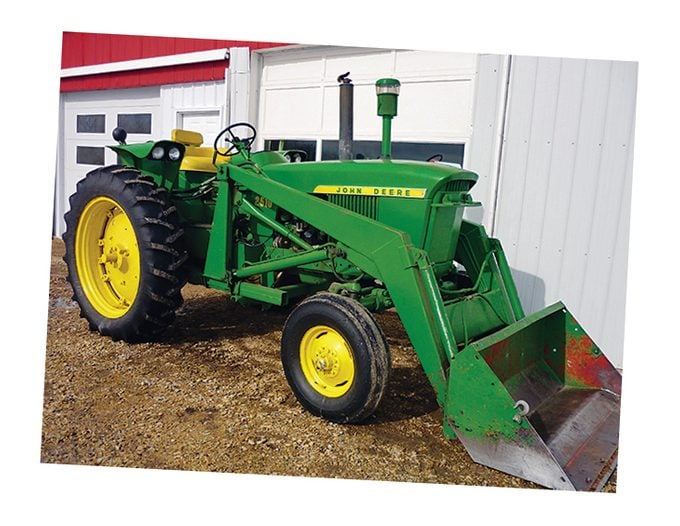
Meet Deere John 2510
The 1967 John Deere 2510, 55 HP, with an eight-speed synchro transmission and a three-point hitch was our only yard tractor for years, and still serves as a backup. It had been a row-crop tractor, with V-shaped front tires and row-crop adjustable axles. After a lot of cleanup and repair work, it was painted. A Soo loader was painted to match, and then added in May 1987.
And that’s where our collection of functional tractor history stands today. As you can probably tell by now, I’m always happy when I get a chance to recall and share the simplicity of those “Deere old days.”
If you enjoyed looking back at these old John Deere tractors, check out a stunning gallery showcasing the Canadian Prairies.
